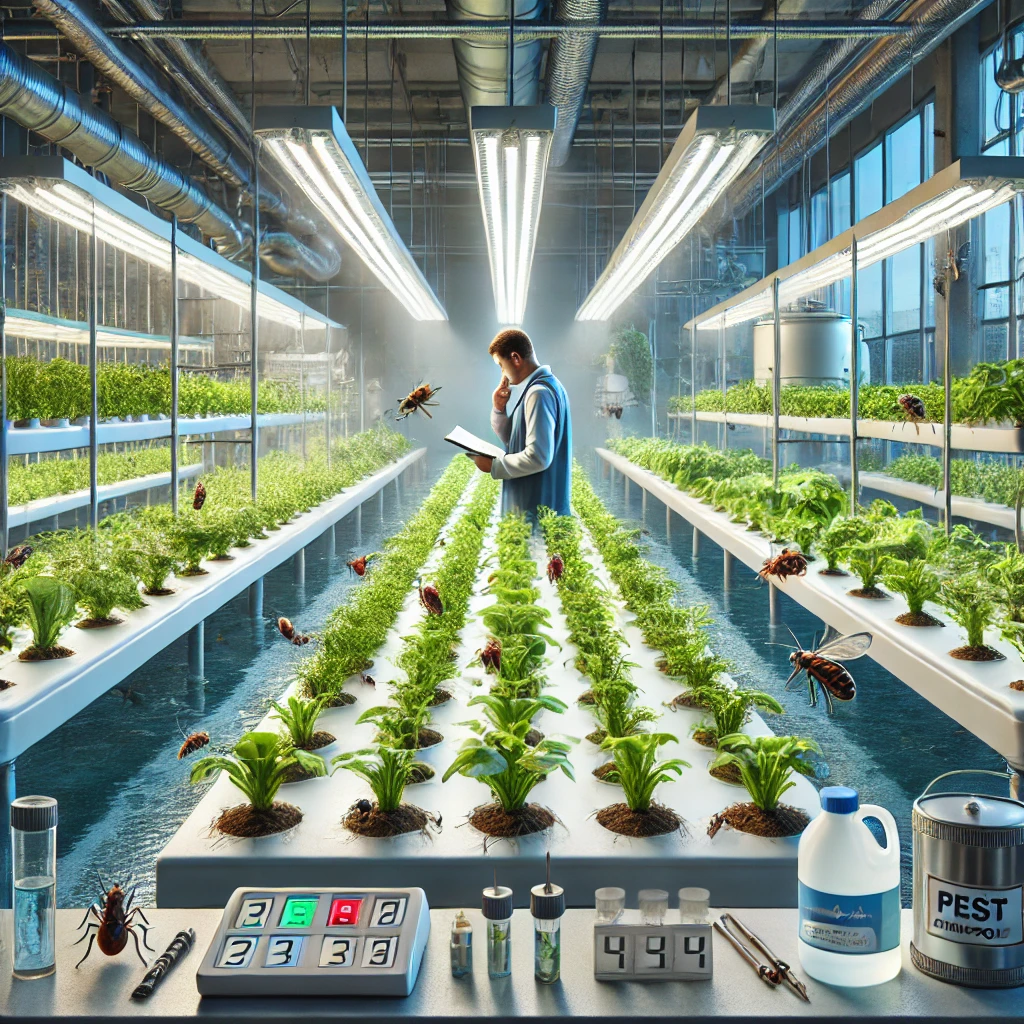
Introduction
Hydroponic systems offer a soil-free method of growing plants, allowing for precise control over nutrients and water. Despite their advantages, these systems face specific pest management challenges. This essay explores the challenges of pest control in hydroponic systems and proposes practical solutions to effectively manage pests while maintaining system efficiency.
Challenges in Hydroponic Systems
Hydroponic systems, due to their closed environments, can create ideal conditions for pest infestations. The absence of soil limits natural predators and complicates traditional pest management approaches. Additionally, pests can spread rapidly through the nutrient solution and infect plants quickly. These challenges necessitate targeted strategies to manage pests effectively without disrupting the hydroponic system.
Integrated Pest Management (IPM)
Integrated Pest Management (IPM) is crucial for managing pests in hydroponic systems. IPM involves monitoring for pests, using biological controls, and implementing cultural practices. Regular inspections help detect early signs of infestations. Biological controls, such as introducing beneficial insects like predatory mites or using microbial agents, can target specific pests without harming plants. Adopting good hygiene practices and maintaining optimal environmental conditions also support pest management and prevent infestations.
Environmental Control
Environmental control plays a significant role in pest management within hydroponic systems. Adjusting factors such as temperature, humidity, and light can influence pest behavior and reproduction. For instance, maintaining lower humidity levels can reduce the likelihood of fungal and mold infestations. Implementing air circulation systems can help prevent the spread of airborne pests and diseases. By optimizing these environmental conditions, growers can minimize pest problems and maintain a healthy hydroponic system.
Physical Barriers and Traps
Physical barriers and traps are effective tools for managing pests in hydroponic systems. Barriers like fine mesh screens can prevent pests from entering the system, while sticky traps can capture flying insects. Placing traps strategically around the system helps monitor pest populations and assess the effectiveness of control measures. Regular maintenance and replacement of traps ensure continuous monitoring and effective pest control.
Chemical and Organic Solutions
When pests are detected, growers can use chemical or organic solutions to manage them. Chemical treatments should be used cautiously to avoid disrupting the hydroponic system. Organic solutions, such as neem oil or insecticidal soap, offer effective alternatives. These treatments should be applied in accordance with recommended guidelines to ensure they do not adversely affect the plants or the nutrient solution. Balancing these solutions with IPM strategies ensures effective pest management while maintaining system integrity.
Conclusion
Managing pests in hydroponic systems requires addressing unique challenges with targeted strategies. Integrated Pest Management (IPM), environmental control, physical barriers, and appropriate use of chemical or organic solutions are key to effective pest control. By implementing these strategies, growers can maintain a healthy and productive hydroponic system, ensuring optimal plant growth and yield.

